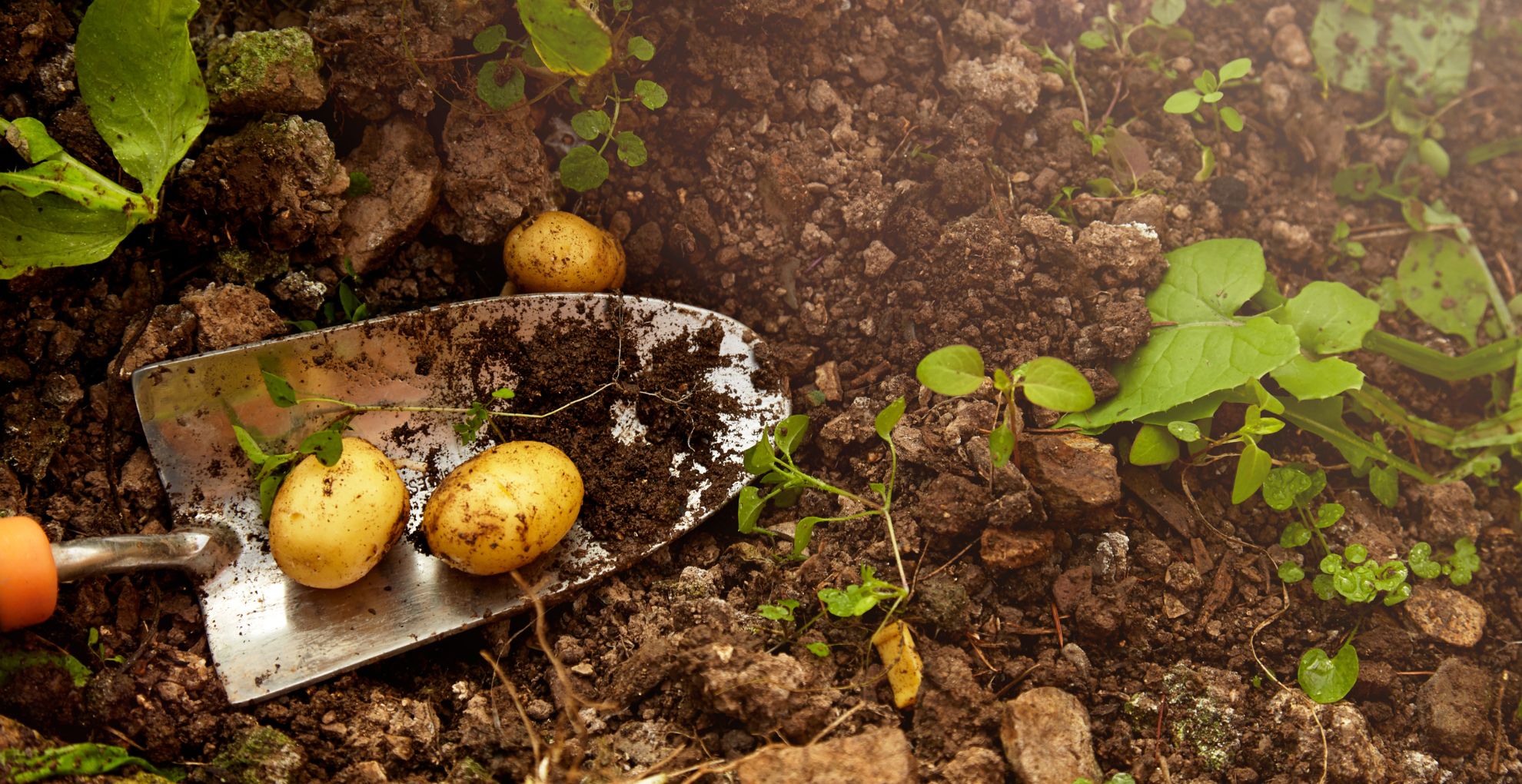When to start chitting potatoes – the expert way to get a bumper crop of spuds
Are you chitting your potatoes already? Because gardening pros say you really should be...


Boil 'em, mash 'em, stick 'em in a stew: everybody loves potatoes, so it's little wonder they're one of the UK's most popular 'grow your own' options. If you want a bumper crop this year though, you need to know when to start chitting your potatoes.
It's one of those terms that means very little to most have-a-go gardeners, but chitting potatoes is a surefire way to ensure they get a head start – and that you get an even earlier crop of delicious tatties.
Thankfully, chitting potatoes sounds much more complex than it really is. In fact, if you're firmly in the vegetable gardening for beginners camp, it's absolutely something you can do while you're brushing up on the latest garden trends.
We speak to gardening experts to reveal when to start and how best to do the job for a prize crop...
When to start chitting potatoes
Before we dive into the when of it all, it's important to understand what we mean by the term 'chitting potatoes'.
"Chitting potatoes is the process of helping potato shoots to grow strong before planting them in the ground or a container," explains Morris Hankinson, director of Hopes Grove Nurseries.

Morris Hankinson is the founder and managing director of Hopes Grove Nurseries Ltd, the UK’s only specialist grower-retailer of hedging plants. He established the thriving business in 1992, shortly after graduating with a Commercial Horticulture Degree from Writtle College, Essex.

"This is said to help the potatoes grow a higher yielding crop and a little quicker than if they weren’t chitted first," continues Morris. "However, it’s important to know that if you don’t chit, that’s totally OK, too! Your potatoes will still grow and you should still get a good crop."
Sign up to our free daily email for the latest royal and entertainment news, interesting opinion, expert advice on styling and beauty trends, and no-nonsense guides to the health and wellness questions you want answered.
While his words are incredibly reassuring, it's worth knowing that the Royal Horticultural Society (RHS) recently insisted that chitting potatoes (a task they deem easy enough for children!) is a vital springtime garden task – like the first lawn cut after winter or the plants to prune in February to get them ahead of new growth come spring.
Just as timing is everything when learning how to prune roses, so the same is true of chitting potatoes. "Chitting can begin in late January through February, and even into March," says Morris.
Christopher O'Donoghue, one of the co-directors of Gardens Revived, is in full agreement, noting that it's best to start chitting in late January if you live in a milder spot in the UK.
"If you live in a colder spot, you can keep chitting your first and second early varieties of potato right up until early March," he says.

A gardener with over a decade of experience under his belt, Christopher set up Gardens Revived with his brother, Andrew, in 2018 to create a thriving family business. Together, they have worked on residential gardens, listed buildings and gardens, flower shows and large estates with some exceeding 70 acres – many with historical significance.
What you will need
Whether it's protecting plants from frost or mowing your lawn, every gardening job is made easier if you have the right tools to hand – and the same is absolutely true of chitting potatoes.
Make sure, then, that you have:
- Seed potatoes (try the Baby New Potato Collection from Crocus, or the Potato Must Have Collection from Thompson & Morgan)
- Plant labels (we're big fans of these Bamboo Plant Labels from Amazon, not least of all because they come with a water-based pen)
- Egg boxes
What to do
All of the very best gardening books say the same thing: learning when to start chitting potatoes is probably the hardest part of this easy gardening task.
"All you need to do is put the seed potatoes upright into a container, such as an egg box, and place them in a light, frost free room," explains Morris.
"Then, all that's left to do is wait until they've sprouted healthy, strong shoots of about 2-3cm in length," he adds, noting that this will usually take somewhere between 4-6 weeks. "Once these have formed, you can plant your potatoes out."
"Just don't forget to label the different varieties," adds Christopher.

FAQs
Do you plant potato chits up or down?
When chitting your potatoes, it's important to know which way round they should go. Which, if you're looking for an easy gardening tip for beginners, means looking for "the 'eye', otherwise known as the 'rose'," says Morris.
Explaining that these are "the little spots where the shoots appear", he adds that you will "often you will see a tiny shoot already forming" to help guide you.
When should you plant out your chitted potatoes?
As mentioned already, your chitted seed potatoes will be ready for planting in about 4-6 weeks, when the shoots are around 2cm in length.
However, soil temperature is everything when it comes to a good crop of tatties. "Use a garden soil thermometer, like this one from Amazon, to make sure your soil has warmed up to about 6°C before you plant them out," says Christopher.
Morris agrees, noting that "if the room is warm they may sprout a bit too quickly before the soil is warm enough to plant them out."
If this is the case, then a conservatory shelf or a well-ventilated greenhouse is the best place to pop them until the weather outside is more welcoming.
Now that you know when to start chitting your potatoes, you can begin planning multiple crops of tatties in earnest, making sure you have enough for your summery potato salads and your wintry roast dinners alike.
Plus, it's a fun term to drop into polite conversation, as it makes you sound like a true gardening pro. Go forth, then, and chit – you'll have everyone thinking you're the next Monty Don in no time.

Kayleigh Dray is an experienced writer and editor within the world of digital journalism. She kicked off her career in magazines with Cosmopolitan as a news writer. Kayleigh then went on to become part of the digital editorial team at Closer, before a successful seven-year stint at Stylist, where she took command as the site’s editor and editor-at-large.
Nowadays, Kayleigh can be found freelancing for a myriad of titles including Woman & Home, along with a role at Ideal Home where she waxes lyrical about her true love: gardening. She is currently giving her own backyard a woodland-inspired makeover – and there have been whispers of a vegetable plot, too.